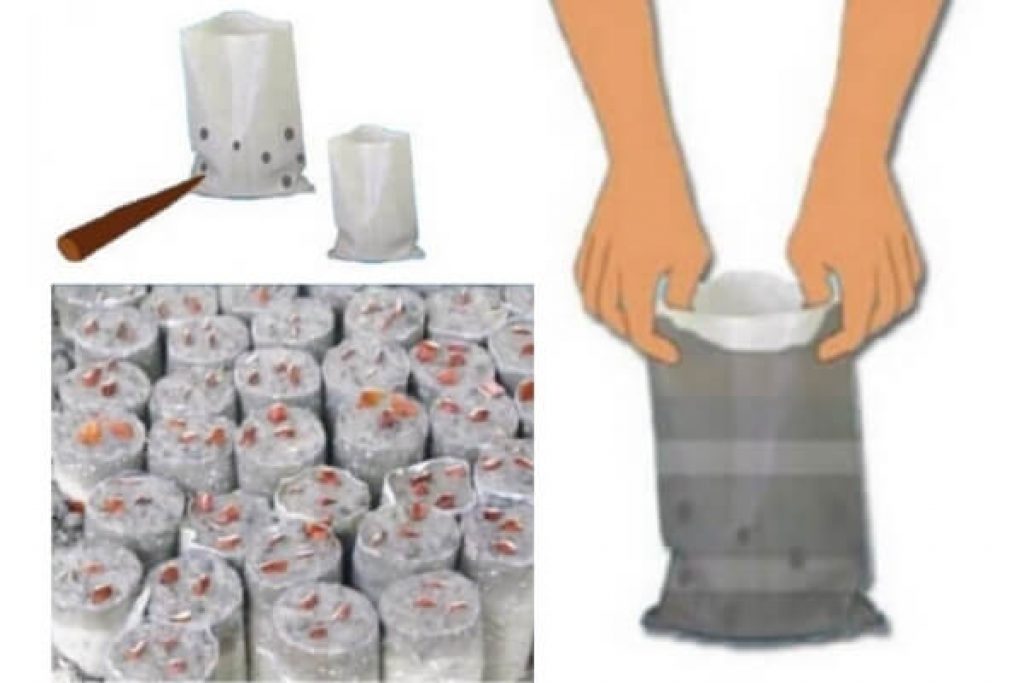Land Preparation For a Nursery:
After selecting the land to create an ideal nursery, it must be prepared suitable for the nursery. The steps to be taken before sowing seeds in the land are given below:
- The land must be cultivated.
- Cow dung, oil husk, or any other organic fertilizer should be applied to the land after cultivation or before sowing the seeds.
- If the same seedlings grow on the same land every year, the disease may increase exponentially. So it is not wise to produce the same seedlings every year. Dhanche ( One kind of herbal plant ) can be cultivated occasionally to increase green manure in the soil.

Nursery Bed Preparation:
It is very difficult to produce lively and strong seedlings in the nursery. To produce good quality seedlings, one side of the nursery should be covered with several layers called nursery beds. Usually, two types of beds are prepared in the nursery.
- Nursery beds on the ground
- Nursery beds in a polybag
Instructions For Making Nursery Bed In The Land:
- First of all, trenches and side trenches have to be dug to prepare the ground level. Then take the soil from the excavated trench and make a side layer. The height of each level will be 4 to 6 inches.
- The width of each trench will be 6 to 12 inches and the depth will be 4 to 6 inches.
- The distance between each level should be 18 to 20 inches.
- If necessary, the levels can be fenced with bamboo or brick.
- Each level can be 20 feet long and 4 feet wide. However, if necessary, you can do the calculations yourself.
- The layers should be made facing north-south. Then the layers will receive the sun for most of the day.
- The level soils must be loosened and loosened with a spade. And its depth should be 8 to 12 inches.
- Any type of grass, roots, bricks, pieces of wood, pieces of stone, etc. should be removed from the soil very carefully.
- If the soil on your land is not good enough, you need to collect good quality soil from somewhere else.
- Then to prepare the layer, the soil should be placed on the ground up to a height of 4 inches. Then cover the entire layer up to an inch deep with cow dung. With the help of a spade or shovel, the amount of chemical fertilizer should be well mixed with the soil. Then water should be sprinkled on all the layers so that dung, chemical fertilizer, and soil can be mixed very well. In the end, the layers have to be covered with mud, only then the work of making the layers will be completed.

Preparation Of Nursery Bed In Polybag:
- To prepare a layer in a polybag, you must first select a plot of land 4 feet wide and 20, 30, or 40 feet long to hold the polybags.
- PP polybags or thin polybags of different sizes need to be collected from the local market.
- Polybags need to be perforated in two rows. Depending on the size of the polybag, 8 to 16 holes need to be drilled for each bag.
- Then the soil should be well mixed with dung, chemical fertilizer, and water as before. The mixed soil should then be placed in a polybag in such a way that there are no holes or gaps inside. If there are holes or gaps, the seedlings can die. A bamboo stick can be used to properly hold the soil in the polybag, and if you hold the top of the polybag with both hands and push it 2-3 times, the soil will be set nicely.
- Once the soil is filled, the polybags should be kept in the right place. The polybags should be placed in a mixed position according to the position so that a beautiful line can be seen after sorting. Care should be taken so that no polybag becomes useless. If so, the seedlings may lean to one side and become weak.
- Polybags should be kept together straight, upright, and neatly arranged.
- Bamboo poles should be placed vertically around the place where the polybags will be kept.
- Then the place should be surrounded by a vertical fence with bamboo mats.

You can read this post to know more about the nursery and its useful tools. And also read the 2nd post about the nursery to know Land Selection, Seed Preparation, and Sowing for an Ideal Nursery
SaveSavedRemoved 0









